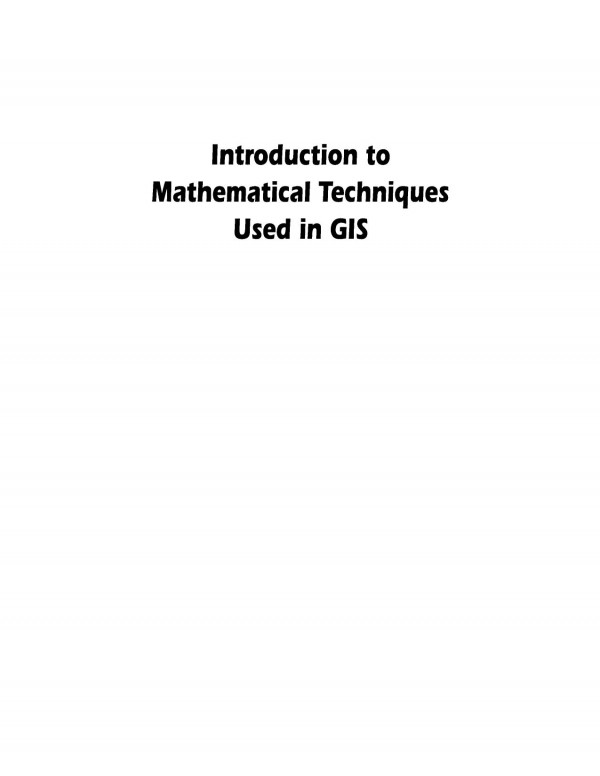

Most ebook files are in PDF format, so you can easily read them using various software such as Foxit Reader or directly on the Google Chrome browser.
Some ebook files are released by publishers in other formats such as .awz, .mobi, .epub, .fb2, etc. You may need to install specific software to read these formats on mobile/PC, such as Calibre.
Please read the tutorial at this link. https://ebooknice.com/page/post?id=faq
We offer FREE conversion to the popular formats you request; however, this may take some time. Therefore, right after payment, please email us, and we will try to provide the service as quickly as possible.
For some exceptional file formats or broken links (if any), please refrain from opening any disputes. Instead, email us first, and we will try to assist within a maximum of 6 hours.
EbookNice Team

Status:
Available5.0
13 reviews
ISBN-10 : 0203491696
ISBN-13 : 9780203491690
Author: Peter Dale
To understand the output from a geographic information system, one must understand the quality of the data that is entered into the system, the algorithms driving the data processing, and the limitations of the graphic displays.
Introduction to Mathematical Techniques Used in GIS explains to nonmathematicians the fundamentals that support the manipulation and display of geographic information. It focuses on basic mathematical techniques, building upon a series of steps that enable a deeper understanding of the complex forms of manipulation that arise in the handling of spatially related data.
The book moves rapidly through a wide range of data transformations, outlining the techniques involved. Many are precise, building logically on underlying assumptions. Others are based upon statistical analysis and the pursuit of the optimum rather than the perfect and definite solution.
Chapter 1 Characteristics of Geographic Information
Geographic Information and Data 1.1
Categories of Data 1.2
Summary
Chapter 2 Numbers and Numerical Analysis
2.1 The Rules of Arithmetic
2.2 The Binary System
2.3 Square Roots
2.4 Indices and Logarithms
Summary.
Chapter 3 Algebra: Treating Numbers as Symbols
3.1 The Theorem of Pythagoras
3.2 The Equations for Intersecting Lines
3.3 Points in Polygons.
3.4 The Equation for a Plane
3.5 Further Algebraic Equations
3.6 Functions and Graphs.
3.7 Interpolating Intermediate Values.
Summary
Chapter 4 The Geometry of Common Shapes.
Triangles and Circles. 4.1
4.2 Areas of Triangles
4.3 Centers of a Triangle
4.4 Polygons.
4.5 The Sphere and the Ellipse.
4.6 Sections of a Cone
Summary
introduction to mathematical methods
introduction to theory of numbers
introduction to methods of applied mathematics
what are mathematical techniques
introduction to technical mathematics
Tags: Introduction, Mathematical Techniques, GIS, Peter Dale